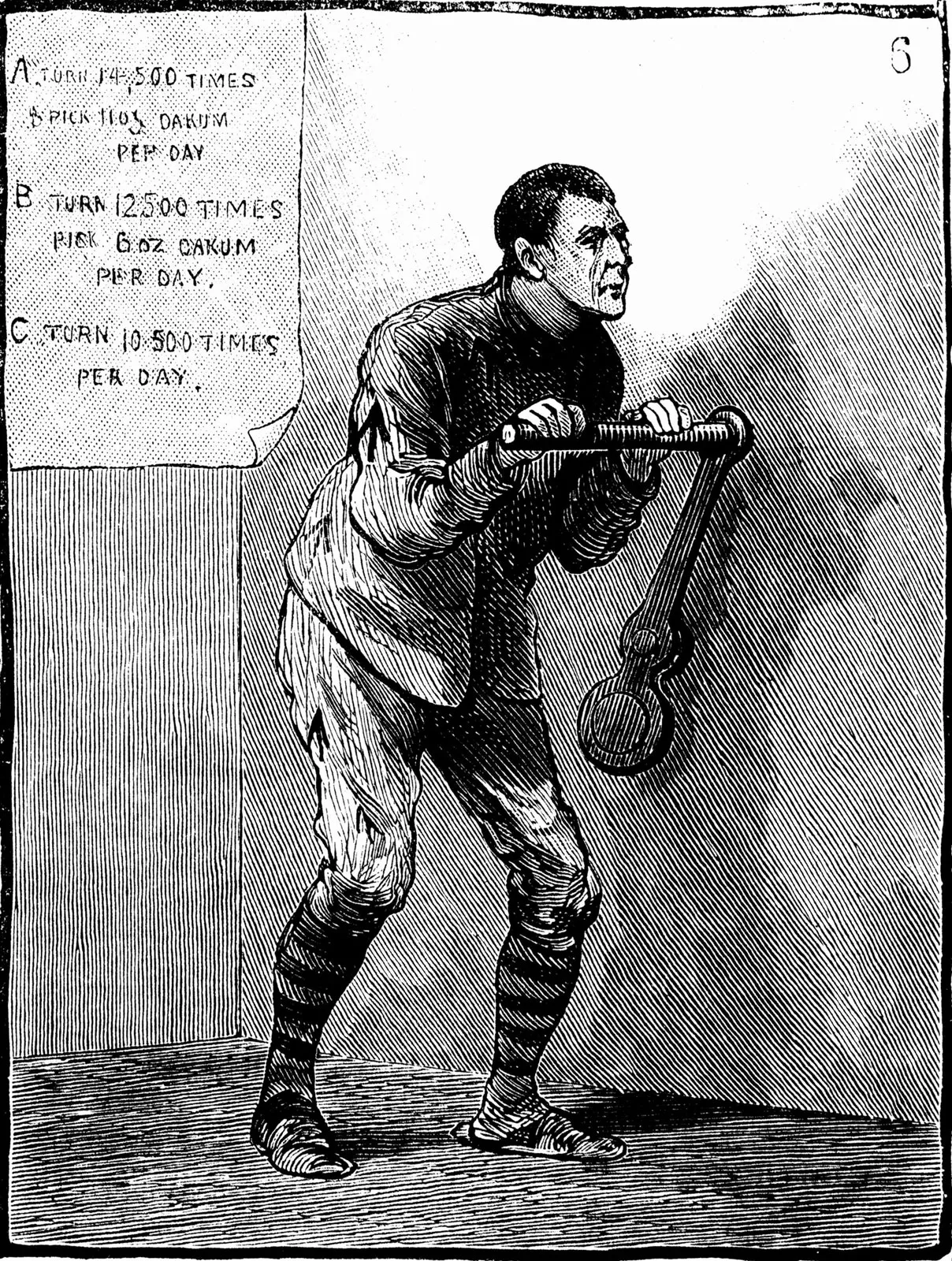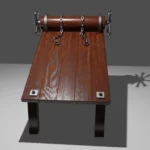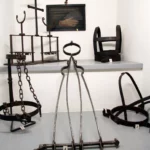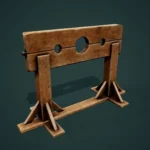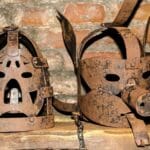Dive into the chilling world of torture, a dark chapter in human history. Join us as we uncover the sinister methods used to inflict unspeakable pain and suffering on innocent victims. From ancient civilizations to today’s war zones, we’ll expose the depths of human cruelty and explore the resilience of those who have survived these horrors. Our journey will shed light on the psychological and physical scars left by torture, underscoring its inhumane nature and its devastating impact on individuals and society.
The Horrific History of Torture
Throughout history, humans have inflicted unimaginable pain and suffering on others through torture. From the dark ages to the modern era, countless innocent lives have been tormented by sadistic and brutal methods. Here are some of the most gruesome and chilling torture techniques ever devised:
The Rack: This sinister device stretched the victim’s limbs until they snapped, causing excruciating pain and often leaving them crippled or dead.
Breaking Wheel: This barbaric tool slowly crushed the victim’s limbs, shattering bones and causing unbearable agony.
Rat Torture: Rats were placed on the victim’s body, their gnawing teeth inflicting excruciating pain that could drive them to madness or death.
The Boot: This gruesome instrument crushed feet and ankles, leaving the victims with permanent disabilities.
Flaying: This sickening punishment involved systematically removing the victim’s skin, causing unimaginable pain and often leading to death.
Heretic’s Fork: This sinister device pierced the victim’s chin and chest, causing severe pain and suffocation.
Thumbscrew: This device tightened relentlessly on the victim’s thumbs, extracting information through unbearable pain.
Scavenger’s Daughter: This barbaric contraption ripped flesh from the victim’s body, causing unimaginable suffering.
Keelhauling: Victims were dragged under a ship’s hull, scraped against rough barnacles and often left with severe injuries or death.
Brazen Bull: This horrifying device roasted victims alive inside a hollow bronze bull, amplifying their screams of agony.
These are just a few examples of the horrific torture methods that have marred human history. They are a testament to the depths of human depravity and the resilience of the human spirit in the face of unimaginable suffering.
- Did you know that in the medieval times, there were numerous torture devices used to inflict pain and suffering? Discover the gruesome tools of medieval torture by clicking here.
- From the infamous Iron Maiden to the terrifying Rack, explore the evolution of torture devices throughout history.
- Step back in time and witness the barbaric practices of medieval torture. Learn about the torture devices used to extract confessions and punish criminals.
- The Stretching Torture Device was a particularly cruel and inhumane method of torture. Discover its chilling history and how it was used to inflict excruciating pain in this article.
- Throughout the Middle Ages, torture was a common practice used to maintain control and extract information. Dive into the dark world of medieval torture and uncover the sinister methods used to inflict agony and terror.
Brazen Bull: A Gruesome Device that Roasted Victims Alive
Imagine a giant bronze bull, its mouth agape. But it’s not a harmless statue; it’s a deadly torture chamber.
That’s the Brazen Bull, a horrifying invention that slowly roasted its victims to death. Back in the day, sick and twisted people used this thing to inflict unimaginable pain.
The bull was made of bronze, with a door on its side. They’d stuff the victim inside, lock the door, and light a fire underneath. As the bronze heated up, the victim would scream in agony, their cries amplified by the bull’s shape, which acted like a loudspeaker.
This device was so cruel, it’s hard to believe anyone could design it. But it’s a reminder of the darkness that humans are capable of.
How It Worked
- Stuff the victim inside: They’d force the poor soul into the bull, making sure the door was shut tight.
- Light a fire underneath: The flames would heat the bronze, which would slowly cook the victim alive.
- Amplify the screams: The bull’s shape made it an acoustic chamber, so the victim’s cries would echo and torment their ears.
Why It’s So Horrific
- Excruciating pain: Victims would endure unimaginable suffering as their bodies slowly roasted.
- Amplified screams: The bull’s design turned the victim’s agony into a symphony of horror.
- Symbol of brutality: The Brazen Bull represents the darkest side of human nature, a reminder of the cruelty we have inflicted upon each other throughout history.
So, there you have it. The Brazen Bull. A ghastly invention that proves how far humans can go when they give in to their evil impulses.
Racking: A Medieval Torture Method That Stretched Victims’ Limbs
In the darkest corners of medieval history, a gruesome device known as the rack held sway over victims’ bodies and minds. This torture method left an indelible mark on those who endured its excruciating torment.
Imagine a wooden frame, mercilessly stretching your limbs in opposite directions. As the tension mounted, muscles screamed in agony. Bones creaked and strained, their delicate structures threatened with shattering. The pain was unimaginable, piercing every fiber of your being.
The rack was not merely a tool of physical brutality. Its tormentors wielded it to shatter minds and extract confessions. Victims endured hours of incessant stretching, their bodies contorting in ways that defied nature. The psychological toll was ebenso devastating, leaving survivors haunted by the horror they had experienced.
The rack’s reign of terror stretched from the 1400s to the 1600s. It became a staple of medieval justice systems, employed to punish criminals and silence dissenters. The accused were often forced to endure this excruciating torture before they were sentenced, a cruel prelude to further suffering or death.
Today, the rack stands as a testament to the savagery that once defined human society. Its legacy is a sobering reminder of the darkness that can lurk within us and the urgent need to fight against cruelty and injustice in all its forms.
Immurement: Being Sealed Alive in a Small Space
Have you ever imagined being trapped in a tiny space with no way out, slowly suffocating to death? That’s exactly what immurement is all about – a cruel practice that has haunted human history.
Imagine being squeezed into a coffin or locked in a wall, with no one to hear your cries for help. That’s what immured victims have endured for centuries. They’ve been punished, executed, or silenced for breaking laws, expressing different ideas, or angering the wrong people.
From the days of ancient Rome to the depths of medieval Europe, immurement has cast a long shadow. It’s been used to silence nuns who broke their vows, priests who challenged the Church, and anyone who dared to speak out against those in power.
How Immurement Was Carried Out
Immurement was rarely a quick or painless death. Victims could be thrown into tiny coffins that barely gave them room to breathe. They could be bricked into walls, their cries for help muffled by the mortar. Some were even left in cramped dungeons, surrounded by darkness and despair.
The Long, Cruel Agony of Immurement
Immured victims faced a slow and agonizing end. They’d struggle to breathe, their hearts pounding with fear. Hunger and thirst would torment them, as they were left without food or water. The darkness would close in, suffocating their minds and senses.
In the end, death would come as a merciful release, but not before immured victims had endured days, weeks, or even months of unspeakable suffering.
The Resilience of Immured Victims
Despite the horrors they endured, some immured victims found ways to cope. They sang songs, prayed, and whispered words of hope to each other. They held onto their faith, their courage, and their humanity even in the darkest of times.
The stories of immured victims serve as a chilling reminder of the human capacity for cruelty. But they also show us the resilience of the human spirit and the indomitable will to survive even under unimaginable circumstances.
Immurement: A Timeline of Cruelty
| Era | Location | Victims |
|---|---|---|
| Ancient Rome | Roman Empire | Priests, nuns, and political enemies |
| Medieval Europe | Europe | Heretics, witches, and those accused of crimes |
| 19th-century Persia | Persia | Baha’i followers and political prisoners |
| 20th-century | Various locations | Victims of torture and political repression |
FAQ
Q1: What were some of the most gruesome medieval torture methods?
A1: Some of the most gruesome medieval torture methods included the rack, the breaking wheel, rat torture, the boot, and flaying. These methods were designed to inflict excruciating pain and suffering, and were often used to extract confessions or punish criminals.
Q2: What was the purpose of the Brazen Bull?
A2: The Brazen Bull was a torture device used in ancient Greece to execute criminals. Victims were placed inside the hollow bronze statue of a bull, and a fire was lit beneath it. The bull would become red-hot, roasting the victim alive.
Q3: How did the rack work?
A3: The rack was a torture device consisting of a wooden frame with rollers at both ends. Victims’ limbs were tied to the rollers, and the frame was stretched in opposite directions, dislocating joints and tearing muscles.
Q4: What is immurement?
A4: Immurement is the practice of sealing a person inside a confined space with no exits, resulting in their eventual death. This method of torture has been used throughout history as a form of punishment or execution.
Q5: Why were these torture methods used?
A5: Torture methods have been used throughout history for a variety of reasons, including extracting confessions, punishing criminals, and deterring future crimes. However, the use of torture is widely condemned today as a cruel and inhumane practice that has no place in modern society.
- Star Ring Trends: Etsy vs Amazon - March 28, 2025
- Boost Pollinator Habitats: Baby Blue Eyes Sustainable Farming Guide - March 28, 2025
- Protect Big Black Bears: Effective Conservation Strategies - March 28, 2025
